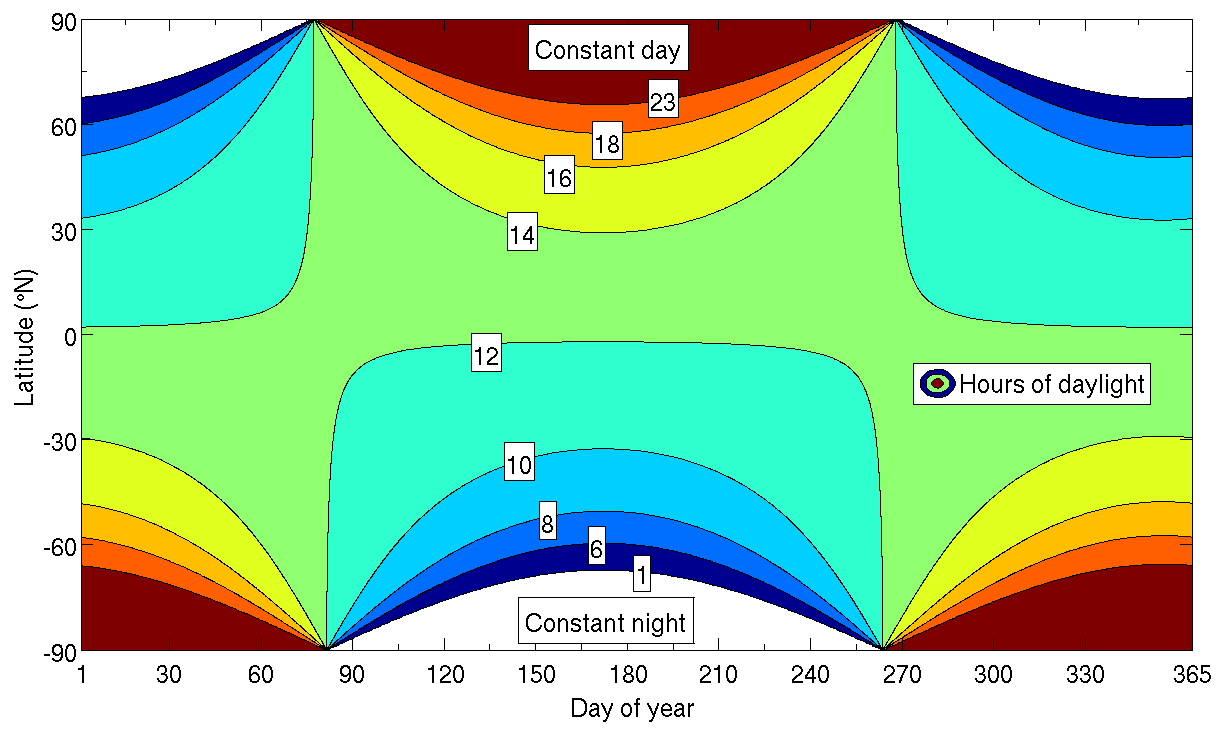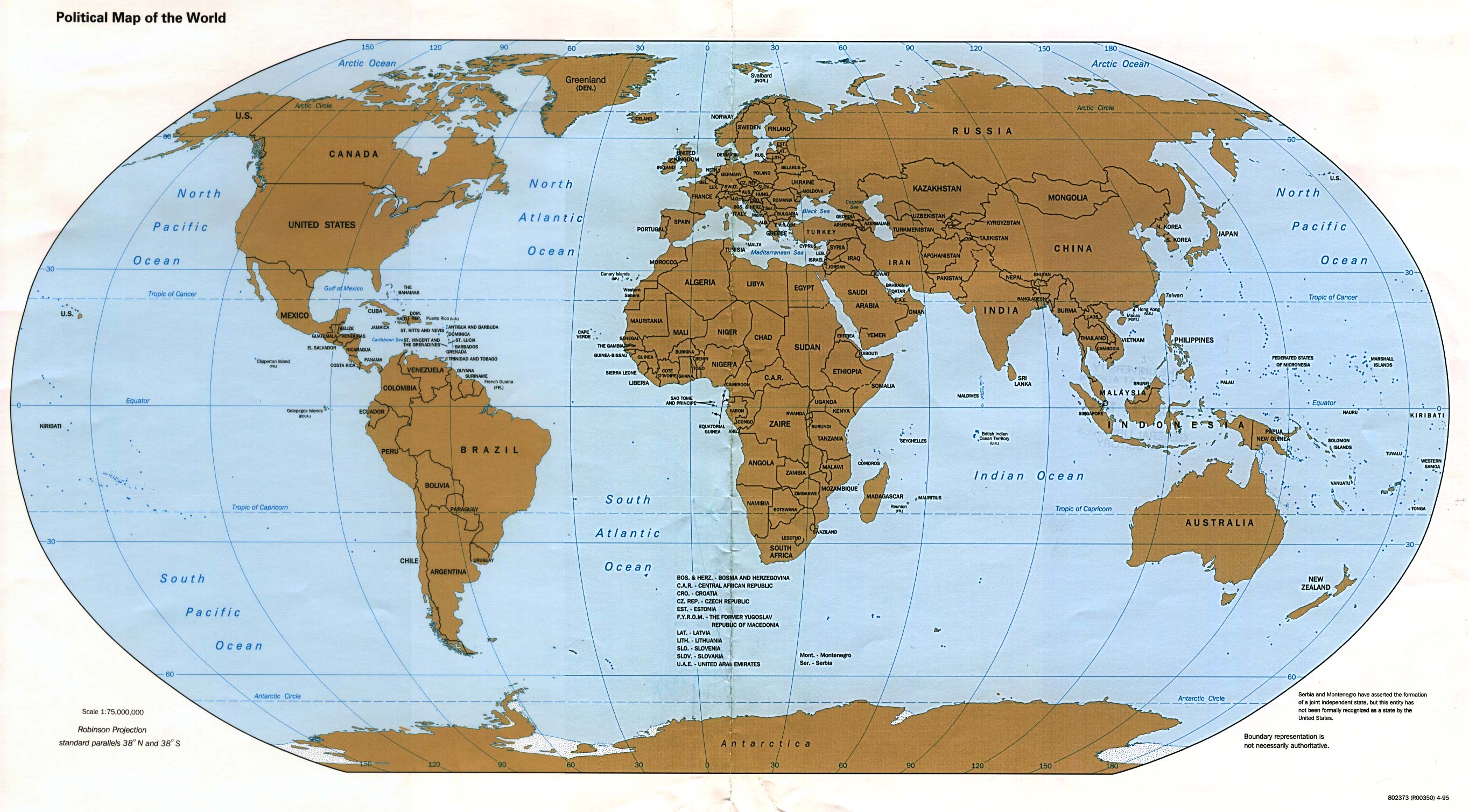As usual, I do not really know anything, but this is what I found through Google:
Quote:
|
On the Equator, the duration of daylight is not exactly 12 hours all the year round, but rather — because of atmospheric refraction and the size of the Sun — exceeds 12 hours by about 7 minutes each day;
|
Day length - Wikipedia, the free encyclopedia
 http://upload.wikimedia.org/wikipedi...ay_of_year.png
http://upload.wikimedia.org/wikipedi...ay_of_year.png
As for comparing length of day in Alaska and along the equator, according to Google, the (average?) latitude of Alaska is 64.0000° N and the axial tilt of earth is 23.4° (I wanted to make sure that I remembered correctly). So, in the middle of the summer, Alaska would have twenty-four hours of sunlight at 41.6°, while on the equator, you would have over twelve hours at 23.4°, while in the dead of winter, Alaska would not have any sunlight, while on the equator, you would have over twelve hours at 23.4°.
Oh, here is a cool toy!
Daylight Hours Explorer
Plugging in 64° N, I get a longest day of 20.4 hours and a shortest of 3.6. Funny how that averages to twelve. For 0° N (or is that south?! :P), hmm, it shows twelve hours every single day.
However, there certainly seems to be more land at 64° N than the equator:
